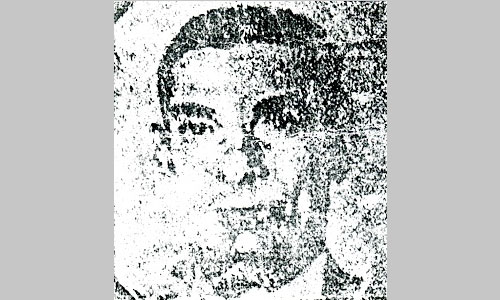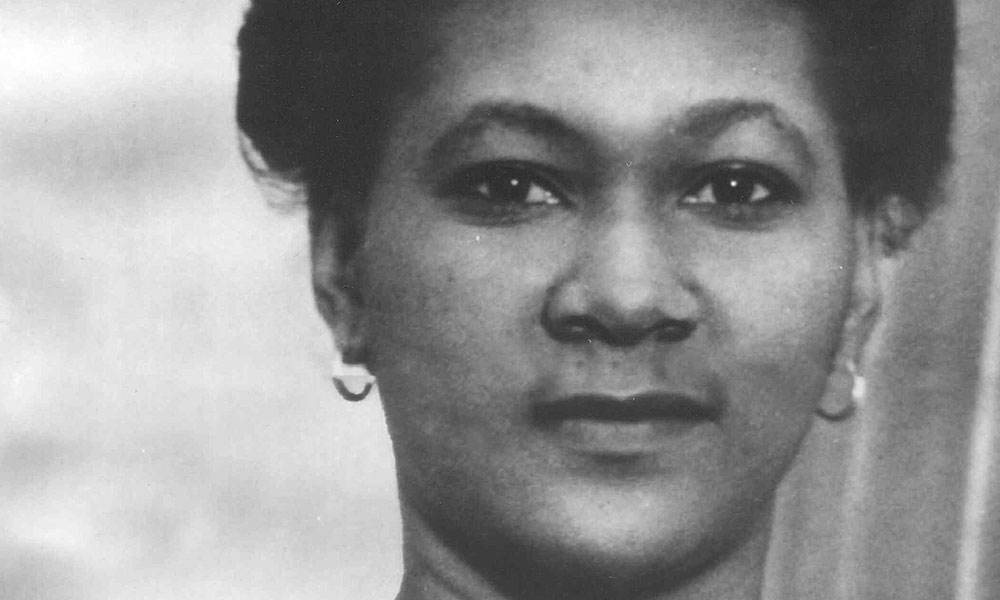
Selwyn MacDonald “Lalaps” Liddie was born on the 28th January 1912. His father was George Whattey and his mother was Emily Liddie of Irish Town, Basseterre. At an early age he learnt the artistry of the kettle drummer, and soon became an lead clown dancer and a troupe organiser.
Lalaps childhood took place in a St. Kitts that offered very few chances of advancement to the working class person. The sugar estate dominated every aspect of life on the island and the rhythm of crop time and dull season set the pace for the year’s activities. Being a townsman, Lalaps was not associated with any particular estate and he further escaped life in the canefields by becoming a longshoreman. But when at Christmas time the regimentation of a sugar producing society was cast aside he joined the merry making with a vigour that was unsurpassed.
The Clowns were, for a long time, only one of the many sports that came out on the streets during the Christmas season. They seem to have made their appearance around the turn of the 20th century. However the restrictions brought on by the war in the 1940s and the increasing emigration of workers in the 1950s, caused a decline in the number of troupes on the streets and the number of participants in each troupe. Clown troupes were once known to have as many as fifty members and their musical instruments used to include the tambourine, chopping reel, triangle, shack pan and bamboo fife. The members of the troupe presented their “heave-ho” and “goo-dung” dances to the slow music of their band and sent spectators scampering to avoid the lash of the hunter.
Liddie’s enthusiasm and organizational skills marked him as a leader. He was respected as such by both the performers in his troupe and the spectators who viewed them throughout the island. Lalaps’ troupe and musicians practised seriously to prepare themselves for the activities of the Christmas week and early on Boxing Day they were ready to take to the streets. At around 5.00am Lalaps, would find himself on the street with the Big Drum awakening those still sleeping with his incessant and infectious “dung tung” beat. He himself had all the percussion instruments for that band. Keeping him company would be men like Mr Sweeney with the fife and Rum Basa playing bass. By 8.30am they would go their separate ways to join other sports. Selwyn Liddie would then head out with his clown troupe. The rest of the week till New Year’s Day would find them touring the villages around the island to the delight and perhaps even fear of those who lived there.
Lalaps played clown for over thirty years. His enthusiasm for the sport was shared by his wife Sybil Martin, known to her friends as “Bill”. Preparations for the yearly street performances started early. Bill made the clown hats for the troupe out of shoe boxes she would have collected from Bata and using ribbon she made the rosettes that every clown had to wear if he was to be a recognised member of a troupe. During the season she would cook a stew of tripe for her husband and the musicians in the band. But domesticity was not the end of Bill’s contribution. Her brother had taught her how to play the violin and she learnt the guitar from a close friend. Music and rhythm were in her soul. While the Clown Leader rested for an hour or so in the afternoon, she would take up his costume and go out to dance. On her return to the household Lalaps would resume his performances.
When age started taking its toll on Lalaps, the mantle of leadership of the clowns was taken up by Long Liner. However Liddie could not give up his joyous participation in the sports. He travelled abroad with clown troupes on several occasions. The zenith of his career came in 1972 when he led a troupe to participate in the first Caribbean Festival of Arts (CARIFESTA 72) in Guyana. In the last few years of his life Liddie supported himself by washing dishes at the Fort Thomas Hotel but his frequent visits to the rum shop had taken their toll on his health. The legendary clown died on the 7
th
July 1974.




